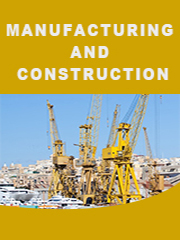Laboratory Safety Cabinets in this report specifically refers to Biological safety cabinets (BSCs). Biological safety cabinets (BSCs) are designed to protect the operator, the laboratory environment and work materials from exposure to infectious aerosols and splashes that may be generated when manipulating materials containing infectious agents, such as primary cultures, stocks and diagnostic specimens BSCs, when properly used, have been shown to be highly effective in reducing laboratory acquired infections and cross-contaminations of cultures due to aerosol exposures. The Biological Cabinets divide to 3 classes: Class I biological safety cabinet, Class II biological safety cabinets, Class III biological safety cabinet.
This report aims to provide a comprehensive presentation of the global market for Laboratory Safety Cabinets, with both quantitative and qualitative analysis, to help readers develop business/growth strategies, assess the market competitive situation, analyze their position in the current marketplace, and make informed business decisions regarding Laboratory Safety Cabinets. This report contains market size and forecasts of Laboratory Safety Cabinets in global, including the following market information:
- Global Laboratory Safety Cabinets Market Revenue, 2018-2023, 2024-2029, ($ millions)
- Global Laboratory Safety Cabinets Market Sales, 2018-2023, 2024-2029, (K Units)
Global top five Laboratory Safety Cabinets companies in 2022 (%)
The global Laboratory Safety Cabinets market was valued at US$ 185.2 million in 2022 and is projected to reach US$ 265.2 million by 2029, at a CAGR of 5.3% during the forecast period. The influence of COVID-19 and the Russia-Ukraine War were considered while estimating market sizes.
The major players in global Laboratory Safety Cabinets market include ESCO, Thermo Fisher Scientific Inc, AIRTECH, etc. The top 3 players occupy about 40% shares of the global market. North America and China are main markets, they occupy about 60% of the global market. Class I, Class II and Class III Biological Safety Cabinet are main types. Pharmaceutical Factory is the main application, which holds a share about 40%.
We surveyed the Laboratory Safety Cabinets manufacturers, suppliers, distributors and industry experts on this industry, involving the sales, revenue, demand, price change, product type, recent development and plan, industry trends, drivers, challenges, obstacles, and potential risks.
Total Market by Segment:
Global Laboratory Safety Cabinets Market, by Type, 2018-2023, 2024-2029 ($ Millions) & (K Units)
Global Laboratory Safety Cabinets Market Segment Percentages, by Type, 2022 (%)
- Class I Biological Safety Cabinets
- Class II Biological Safety Cabinets
- Class III Biological Safety Cabinet
Global Laboratory Safety Cabinets Market, by Application, 2018-2023, 2024-2029 ($ Millions) & (K Units)
Global Laboratory Safety Cabinets Market Segment Percentages, by Application, 2022 (%)
- Pharmaceutical Factory
- Hospital
- Disease Prevention and Control
- Academic Research
- Others (Food Inspection Station, Chemical etc.)
Global Laboratory Safety Cabinets Market, By Region and Country, 2018-2023, 2024-2029 ($ Millions) & (K Units)
Global Laboratory Safety Cabinets Market Segment Percentages, By Region and Country, 2022 (%)
- North America
- US
- Canada
- Mexico
- Europe
- Germany
- France
- U.K.
- Italy
- Russia
- Nordic Countries
- Benelux
- Rest of Europe
- Asia
- China
- Japan
- South Korea
- Southeast Asia
- India
- Rest of Asia
- South America
- Brazil
- Argentina
- Rest of South America
- Middle East & Africa
- Turkey
- Israel
- Saudi Arabia
- UAE
- Rest of Middle East & Africa
Competitor Analysis
The report also provides analysis of leading market participants including:
- Key companies Laboratory Safety Cabinets revenues in global market, 2018-2023 (Estimated), ($ millions)
- Key companies Laboratory Safety Cabinets revenues share in global market, 2022 (%)
- Key companies Laboratory Safety Cabinets sales in global market, 2018-2023 (Estimated), (K Units)
- Key companies Laboratory Safety Cabinets sales share in global market, 2022 (%)
- Further, the report presents profiles of competitors in the market, key players include:
- ESCO
- Thermo Fisher Scientific Inc
- AIRTECH
- Telstar Life-Sciences
- NuAire (Polypipe)
- The Baker Company
- Kewaunee Scientific
- Heal Force Bio-Meditech
- BIOBASE
- Donglian Har Instrument
- Labconco
- Outline of Major Chapters:
- Chapter 1: Introduces the definition of Laboratory Safety Cabinets, market overview.
- Chapter 2: Global Laboratory Safety Cabinets market size in revenue and volume.
- Chapter 3: Detailed analysis of Laboratory Safety Cabinets manufacturers competitive landscape, price, sales and revenue market share, latest development plan, merger, and acquisition information, etc.
- Chapter 4: Provides the analysis of various market segments by type, covering the market size and development potential of each market segment, to help readers find the blue ocean market in different market segments.
- Chapter 5: Provides the analysis of various market segments by application, covering the market size and development potential of each market segment, to help readers find the blue ocean market in different downstream markets.
- Chapter 6: Sales of Laboratory Safety Cabinets in regional level and country level. It provides a quantitative analysis of the market size and development potential of each region and its main countries and introduces the market development, future development prospects, market space of each country in the world.
- Chapter 7: Provides profiles of key players, introducing the basic situation of the main companies in the market in detail, including product sales, revenue, price, gross margin, product introduction, recent development, etc.
- Chapter 8: Global Laboratory Safety Cabinets capacity by region & country.
- Chapter 9: Introduces the market dynamics, latest developments of the market, the driving factors and restrictive factors of the market, the challenges and risks faced by manufacturers in the industry, and the analysis of relevant policies in the industry.
- Chapter 10: Analysis of industrial chain, including the upstream and downstream of the industry.
- Chapter 11: The main points and conclusions of the report.
